Hello again and welcome back to the blog. Have you made any interesting observations about
the birds in your backyard? I have been spending lots of time looking out my windows and also
taking walks through my local conservation areas. I have been noticing that many birds are busy
gathering materials for their nests. They are also spending more time in pairs and continuing to
scuffle with one another about territory and prime nesting spaces. Every year there are a few
different types of nests I look forward to seeing because it means that there will be baby birds
to watch in my yard. There is usually a pair of mourning doves who nest in the pine tree, robins
nesting in the front maple tree and one year we had a nest of gray catbirds.
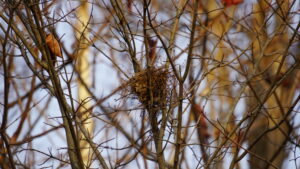
If you remember, over the winter we took advantage of the trees’ fallen foliage to catch a
glimpse of nests which would otherwise be hidden in springtime by new leaves. Don’t forget to
check back on those nests and see if they are being reused this year. Taking time to sit quietly
at a distance from the nest might help you to see if a bird has claimed it for its own.
This past week I observed two robins gathering material for a nest. They were fun to observe as
the female robin took a long time trying out my neighbour’s windowsill to see if it would be a
good place to build her nest. She sat in every different direction as the male gathered pieces of
long grass and kept watch over the potential prime spot. She tried different sitting positions for
about an hour before they both flew away. It seems as though she did not approve of the
location because they did not return. Maybe there wasn’t quite enough space for her tail, or
she felt too exposed, or perhaps she had spied a predator and felt that her babies would be
unsafe there.
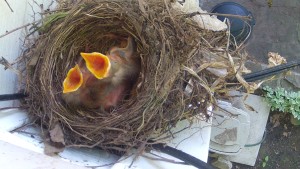
Although robins do sometimes nest in windowsills, there are many factors which
affect their judgement towards whether or not a location is safe and suitable to raise young.
Robins use grass, twigs and mud to build strong sturdy nests.
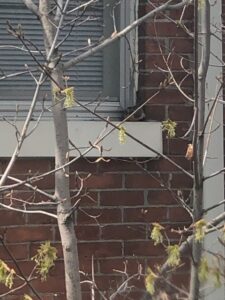
Mourning doves on the other hand, are not expert craftsmen when it comes to nesting. For
many mourning doves a simple arrangement of twigs in a tree with dense foliage is enough for
them to settle in. They are frequent nesters in and around residential properties, sometimes
nesting in a hanging flower basket or on a door wreath. The best thing we can do for mourning
doves and their nesting habits is to cherish the trust they place in humans and protect their
privacy while they raise their young. This means giving them lots of space and doing your best
not to interrupt them. I consider the mourning doves in my yard to be my neighbours,
especially so when I saw that the mother had left her baby with me for the day. The baby who
was too big for the nest but not quite ready to fly yet stayed quietly by my barbeque until its
family returned.
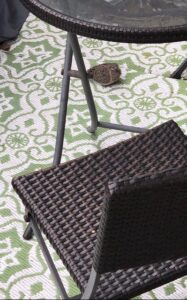
Earlier this week, during a walk at my local conservation area, I spent time watching the nest
boxes that had been installed over the wetlands. I observed several Tree Swallows building
nests in the boxes.

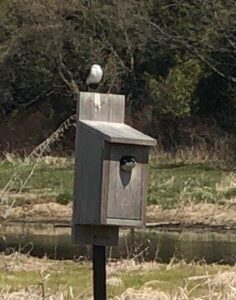
Tree swallows are so called because they prefer to nest in tree cavities that
are close to wide open spaces and bodies of water. The tree cavities they use are created by
woodpeckers and other birds and the trees are usually dead. I’m sure you’ve noticed different
sized holes in dead trees while you are out walking. The nest boxes installed at the conservation
area provide the same type of shelter with an entry hole perfectly suited to the swallows. All they have to do is claim their box, add some foraged grass and feathers and they are ready to
raise their young amongst the most plentiful wetland food source, insects!
I hope that you keep an eye out for nesting birds this spring and see if you can identify the
types of materials preferred for nesting and the particular behaviours of birds as their raise
their young. It’s such an exciting time in bird world so make sure you don’t miss out! Until next
time, happy birding.
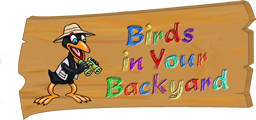

Recent Comments